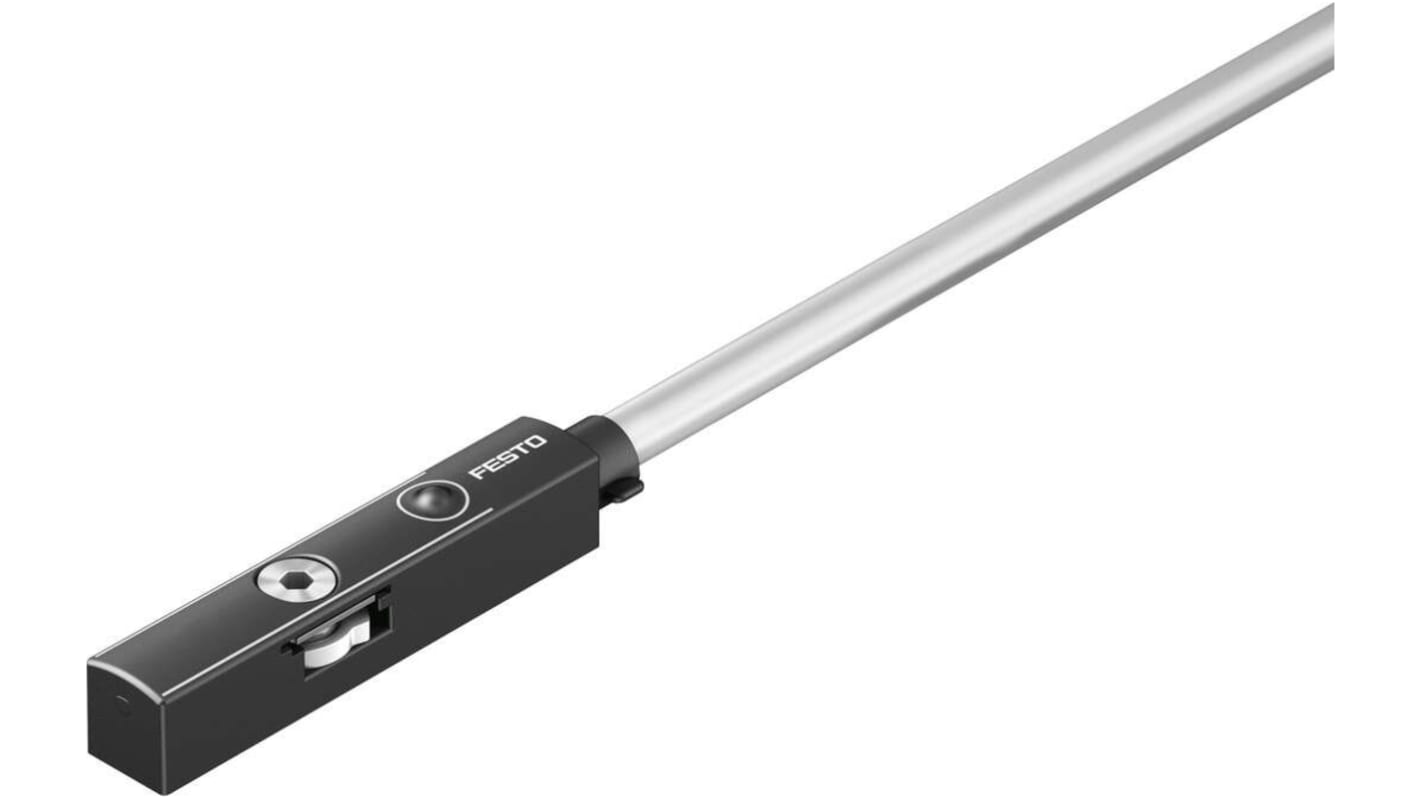Festo Proximity Sensor Proximity Sensor, 24V, NPN, PNP Operation with LED indicator, 8059123
- RS Stock No.:
- 259-5716
- Mfr. Part No.:
- SDBT-MSX-1L-NU-E-0.3-N-M8
- Brand:
- Festo

Subtotal (1 unit)*
£38.51
(exc. VAT)
£46.21
(inc. VAT)
FREE delivery for orders over £50.00
In Stock
- 18 unit(s) ready to ship
- Plus 16 unit(s) ready to ship from another location
Need more? Click ‘Check delivery dates’ to find extra stock and lead times.
Units | Per unit |
|---|---|
| 1 + | £38.51 |
*price indicative
- RS Stock No.:
- 259-5716
- Mfr. Part No.:
- SDBT-MSX-1L-NU-E-0.3-N-M8
- Brand:
- Festo
Specifications
Technical Reference
Legislation and Compliance
Product Details
Find similar products by selecting one or more attributes.
Select all | Attribute | Value |
|---|---|---|
| Brand | Festo | |
| Type | Proximity Sensor | |
| Supply Voltage | 24V | |
| LED Indicator | Yes | |
| Operation | NPN, PNP | |
| Minimum Operating Temperature | -40°C | |
| Maximum Operating Temperature | +85°C | |
| Electrical Connection Type | Cable with Plug | |
| Outlet Port | M8 | |
| Model Number p | 8059123 | |
| Select all | ||
|---|---|---|
Brand Festo | ||
Type Proximity Sensor | ||
Supply Voltage 24V | ||
LED Indicator Yes | ||
Operation NPN, PNP | ||
Minimum Operating Temperature -40°C | ||
Maximum Operating Temperature +85°C | ||
Electrical Connection Type Cable with Plug | ||
Outlet Port M8 | ||
Model Number p 8059123 | ||
- COO (Country of Origin):
- BG
Festo Proximity Sensor, T-Slot Type, Magnetic Hall Measuring Principle - SDBT-MSX-1L-NU-E-0.3-N-M8
For an automated system that keeps its eye on the ball, install this proximity sensor from Festo. It detects how close an object is and relays that data to your system so it can react accordingly. You get near-instant reactions, thanks to a quickfire 2ms switch on and off time. An IP68 rating means the unit is protected against dust and moisture, so stands up to use in challenging environments. You can expand the cable's reach in a snap if needed by adding a NEBU-series connecting cable (121-5575).
Features & Benefits
• Standard M8 connector plugs easily into your existing setup
• Reliable performance in demanding applications thanks to an operating temperature range of -40°C to +85°C
• Screw-locking connection prevents accidental loosening in vibrating conditions
• Reliable performance in demanding applications thanks to an operating temperature range of -40°C to +85°C
• Screw-locking connection prevents accidental loosening in vibrating conditions
Applications
• Robotics systems
• Processing facilities
• Industrial automation
• Manufacturing plants
• Processing facilities
• Industrial automation
• Manufacturing plants
What's the magnetic Hall measuring principle?
This unit contains a magnet, an electronic circuit and a Hall element, which is a kind of sensor. When an object with a magnetic field comes into range, it changes the Hall element's voltage. This change is how the sensor detects metallic items, even in polluted environments.
Related links
- Festo Proximity Sensor Proximity Sensor NPN 8059124
- Festo Pneumatic Cylinder Sensor, 10 → 30V
- Festo Proximity Sensor IP68 24V dc SDBT-MSX, with LED indicator
- Festo Proximity Sensor IP68, 10 → 30V
- Festo Proximity Proximity Sensor NO, 30 V
- Festo Pneumatic Cylinder Sensor 8059122
- Festo Transmitter Pneumatic Cylinder Sensor IP68 Manual Operation with LED
- Festo Proximity Sensor IP68, 24V
